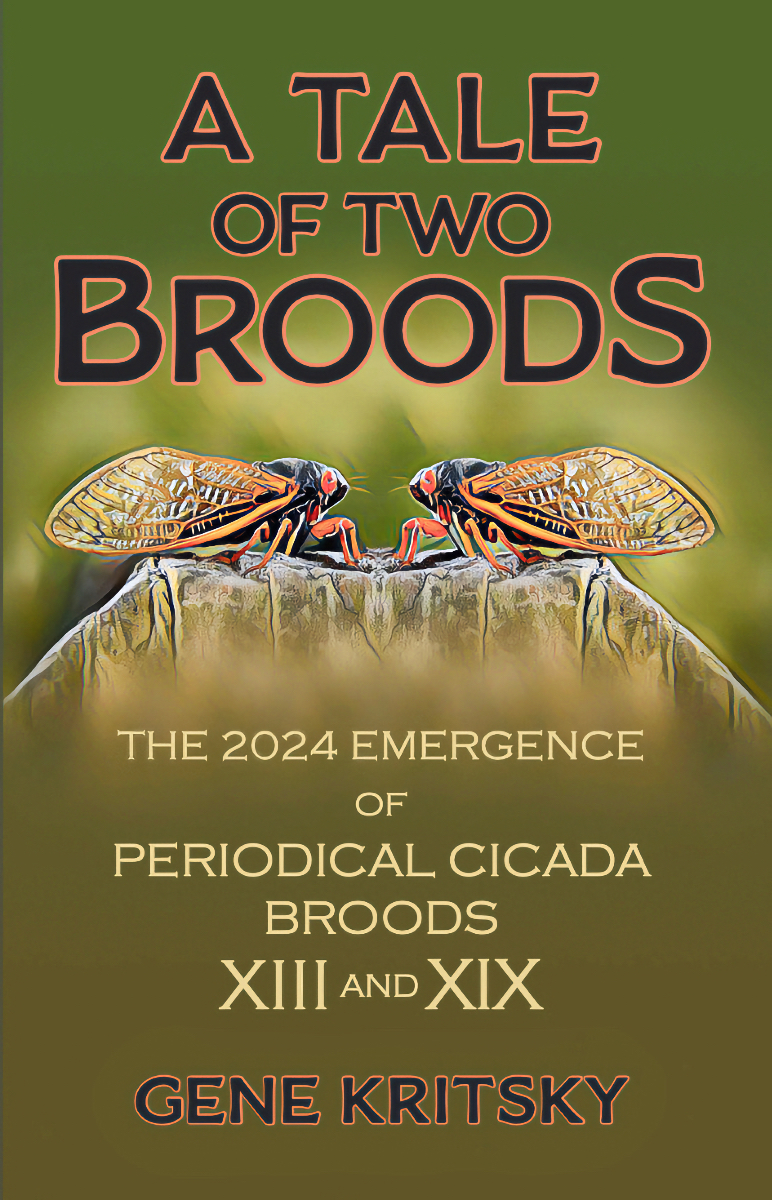Gene Kritsky, Ph.D., Professor Emeritus of Biology and former Dean of the School of Behavioral and Natural Sciences at Mount St. Joseph University, has authored a new book on an historic cicada emergence.

CINCINNATI - Renowned cicada expert Gene Kritsky, Ph.D., Professor Emeritus of Biology and former Dean of the School of Behavioral and Natural Sciences at Mount St. Joseph University, has authored a new book on an historic cicada emergence that has not occurred since Thomas Jefferson was president.
"A Tale of Two Broods: The 2024 Emergence of Periodical Cicada Broods XIII and XIX", tells the compelling phenomenon of the dual emergence of billions of periodical cicada breeds Broods XIII and XIX, a spectacle that only occurs every 221 years.

In photo: Book cover
"This is not just a cicada year; it's a historic convergence of Broods XIII and XIX, making it a once-in-a-lifetime experience for enthusiasts and researchers alike," Dr. Kritsky said.
During May and June, the 17-year Northern Illinois Brood XIII will emerge in and around Chicago, across northern Illinois and in portions of far northwest Indiana, southern Wisconsin and eastern Iowa.
Around the same time, the 13-year Great Southern Brood XIX will begin showing up southern Illinois, Missouri, Arkansas, central and southeastern Tennessee, northern Louisiana, Mississippi, Alabama, northern and central Georgia, northern South Carolina, central and northern North Carolina and eastern Virginia.
A Tale of Two Broods serves as a perfect starting point for those looking to delve into the world of periodical cicadas and witness this extraordinary event in 2024. With Dr. Kritsky's insightful narrative, readers can anticipate gaining a deeper appreciation for the intricate lives of these remarkable insects.
To help track these late arriving cicadas, Dr. Kritsky is reaching out to citizen scientists who have downloaded hugely popular Cicada Safari app, which allows anyone with a Smartphone to search, photograph, video and help map these off-cycle cicadas.
"Cicada Safari has become an international phenomenon," Dr. Kritsky said. “It has been incredibly popular. And users can now help us track, photograph and map this historic event. "
Cicada Safari users contribute to vital scientific research by determining the distribution of the emerging cicadas, enabling scientists to assess the status of cicada broods. The app has proven to be an effective mapping and tracking tool.
"We developed this app because so many people are fascinated by cicadas," said Dr. Kritsky, who has studied, tracked and written about cicadas throughout his academic career. "This is true citizen science. The photographs and videos submitted to our map are like voucher specimens permitting us to verify the observations, making the maps more useful for future research."
The Cicada Safari app can be downloaded from the Apple App Store or Google Play.
Dr. Kritsky worked in partnership Center for IT Engagement (cITe) at Mount St. Joseph University to create the Cicada Safari App. Dr. Kritsky and the Mount have also launched the CicadaSafari.org website, which offers a virtual trove of cicada facts, history, facts, maps, activities and more.
A recognized cicada expert, Dr. Kritsky has given hundreds of media interviews, published academic papers on cicadas and is the author of two books on cicadas. His latest book, "A Tale of Two Broods,” was published by the Ohio Biological Survey this month.
Following are some cicada facts from the Cicada Safari.org website:
- Cicadas emerge after the soil temperature exceeds 64 degrees.
- Only male cicadas sing through sound-producing structures called tymbals on either side of the abdomen under the wings.
- Cicadas do not eat solid food, but do drink fluids to avoid dehydration.
- Cicadas do not sting or bite, and do not carry diseases.
- Periodical cicada years are quite beneficial to the ecology of the region. Their egg-laying in trees is a natural pruning that results in increased numbers of flowers and fruits in the succeeding years. Their emergence from the ground turns over large amounts of soil, and after they die their decaying bodies contribute a massive amount of nutrients to the soil.
- Periodical cicadas were often incorrectly called locusts in the past. Locusts are grasshoppers and cicadas are more closely related to aphids than grasshoppers.
About the Mount St. Joseph University
As a Catholic institution rooted in the values of the Sisters of Charity, Mount St. Joseph University excels at serving the common good. Undergraduate, graduate, and doctoral students at the Mount are inspired to think beyond the classroom and redraw the bounds of what’s possible for their futures. This is accomplished through individualized educational experiences, a safe, secure campus environment, and an all-in commitment from faculty and staff to seeing students reach their highest potential. The Mount fosters life-long learners who serve, care, and contribute to the world beyond their front doors.

